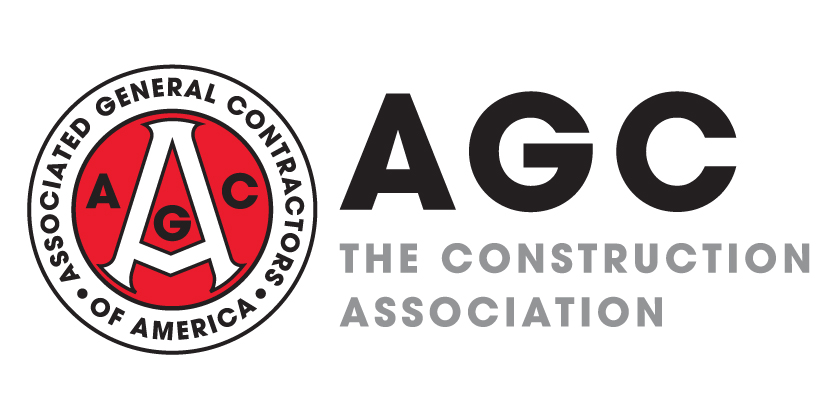
Contractors' bid prices inched up 0.1% from July to August, while materials and services input costs dipped 0.2% for the month, based on an AGC analysis of producer price indexes (PPIs) that the Bureau of Labor Statistics (BLS) posted on Wednesday. Compared to August 2018, the PPI for new nonresidential building construction—a measure of the price that contractors say they would charge to build a fixed set of buildings—rose 5.6%. Increases ranged from 4.2% year-over-year (y/y) for new healthcare building construction to 4.8% for office buildings, 5.6% for warehouses, 6.6% for industrial buildings and 6.9% for schools. Increases in PPIs for subcontractors' new, repair and maintenance work on nonresidential buildings ranged from 2.4% y/y for roofing contractors to 5.6% for electrical contractors, 5.8% for plumbing contractors and 7.2% for concrete contractors. In contrast to these output prices, the PPI for inputs to construction—excluding capital investment, labor and imports—edged up only 0.4% y/y, a sharp deceleration from the 6.4% increase one year earlier. This index covers both goods (56%) and services (44%). The PPI for energy inputs to construction tumbled 13% y/y. The PPI for nonenergy goods inputs rose 1.3% y/y; the index for services inputs increased 1.9% y/y. Price increases turned negative for some previously fast-rising inputs such as diesel fuel (down 18% y/y, following a 35% jump a year earlier), lumber and plywood (-12% y/y, following a 6% rise); steel mill products (-11% y/y, following an 18% gain); gypsum products (-8.4% y/y, following a 7.5% rise); and aluminum mill shapes (-5.2% y/y, following a 15% gain). In contrast, the PPI for architectural coatings rose 6.5% y/y, vs. 4.7% a year earlier.
There were 373,000 job openings in construction at the end of July, not seasonally adjusted, an increase of 59,000 (19%) from July 2018, and the highest total for July since the series began in December 2000, BLS reported on Tuesday in its latest Job Openings and Labor Turnover Survey (JOLTS) release. The industry hired 442,000 employees in July, not seasonally adjusted, 8,000 (2%) fewer than the number hired in July 2018 but the second-highest July total since 2008. The quit rate was 2.8% of employees, slightly less than the 3.1% rate in July 2018 but still the second-highest rate since 2008. Together, the record-high job openings in construction at the end of July, elevated quit rate and low construction unemployment rate in August (3.6%, not seasonally adjusted, as BLS reported on September 6), and nearly 50-year low for the total unemployment rate underscore the challenge that contractors face in finding and retaining acceptable workers to hire. The data are consistent with a continuing strong construction market and with the results of the 2019 Autodesk-AGC of America Workforce Survey, which found that 91% of the 1,935 respondents expect their firms will hire hourly craft personnel in the next 12 months (19% for expansion, 72% for replacement).
Construction data firm ConstructConnect reported today that the value of construction starts in August jumped 14% y/y from August 2018, not seasonally adjusted. For January-August combined, starts fell 3.3% year-to-date, compared with the first eight months of 2018. Residential starts tumbled 16% y/y and 12% year-to-date, with multifamily starts down 22% year-to-date and single-family starts down 7.6%. Nonresidential starts rose 34% y/y and 2.2% year-to-date, as nonresidential building starts edged up 0.3% year-to-date and civil starts increased 5.7%. The nonresidential year-to-date "2.2% figure overall was mainly thanks to industrial (68.1%), with a minor assist from civil (+5.7%), as there was no help coming from commercial (-11.7%) or institutional (-5.9%)."
"U.S. manufacturers are investing less in their factories and workforces as the trade dispute with China makes it more difficult for executives to anticipate costs and demand, the Wall Street Journal reported on Monday. "Truck maker Navistar International Corp. said [September 4] that it expects to spend $115 million on capital projects this year, down about 25% from its previous forecast after truck orders slowed sharply in recent months. Caterpillar Inc.'s capital expenditures dropped 16% in the quarter that ended in June from that period a year earlier. And Illinois Tool Works Inc. said business uncertainty reduced demand for its welding, measurement and other equipment in the second quarter."
"The National Association of Home Builders' Home Building Geography Index (HBGI) tracks the markets of single-family and multifamily residential construction and their recovery following the Great Recession," NAHB posted on September 5. The index shows the shares of homebuilding that occur each quarter in the U.S., sorted into seven "regions" based on population density. In the second quarter (Q2) of 2019 the "largest building region for multifamily construction remained large metro core areas (at 41% market share), [followed by suburban counties of large metros, with a 25% market share], but there was a gain for the third largest region (small metro cores), which increased to a 22% market share. Consistent with expectations of apartment construction moving from high land-cost areas to low land-cost areas, the data from [Q2] 2019 show a shift in the shares of new permit issuances from large metro areas to smaller metro areas, small towns, and rural areas. Even exurbs, i.e., outlying counties of large metro areas, which posted single-family growth in a generally weak first quarter and are considered relatively more affordable, experienced a decline in market share in multifamily construction as apartment construction modestly expands to other building regions."
Total revenue, not seasonally adjusted, for architectural and related services firms increased 2.4% in Q2 from Q1 2019 and 6.6% from Q2 2018, the Census Bureau reported on September 6 in its Quarterly Services Survey. Total revenue for engineering services firms increased 9.7% for the quarter but only 4.1% year-over-year.




